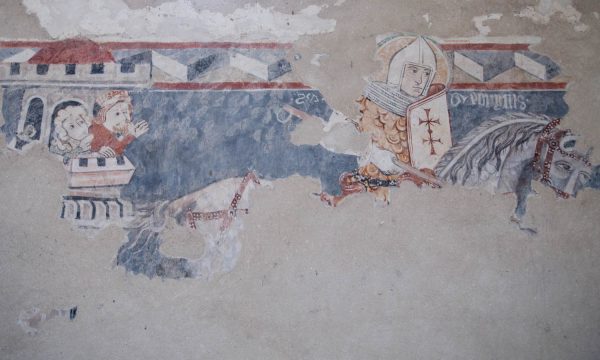Wall painting
The settlement`s Reformed church was built most probably in the late 1300`s. As the population grew, the church was extended in the 15th century with a polygon shaped sanctuary built on piers, then later in the following centuries other modifications occurred. The sanctuary was decoratively painted; on green tendril patterns we can see different armorial bearings and man shaped figures.

These Gothic paintings did not bother the Reformed Christians; therefore, the paintings were not destroyed. Among the armorial bearings, we can notice one illustrating a fortress gate with three towers, most probably the coat of arms of Sighișoara (Hu: Segesvár). The coat of arms of Brașov (Hu: Brassó) with the roots holding a crown is also present, and we can see the Szekler’s coat of arms, an armoured arm holding a sword. Besides these, the coat of arms of Sibiu (Hu: Szeben), that of King Vladislaus II of Hungary, of Transylvanian vice-voivode Lénárd Barabási and the coat of arms of Hungary with the Árpád stripes were painted as well.
The sidewall paintings inside the church were first discovered in 1882. József Huszka created a water-colour painting to replicate the original wall paintings, which were limewashed again.

In the nave, there is a very fragmented painting of Saint Ladislaus, king of Hungary. The best recognizable scene is that of the chase. Apart from this, a fragment of a portrayal of Saint George and a depiction of Saint Christopher have survived. The painting in the sanctuary, also very fragmented today, most probably illustrated the Last Judgment. On the southern side of the nave a runic inscription was discovered.
